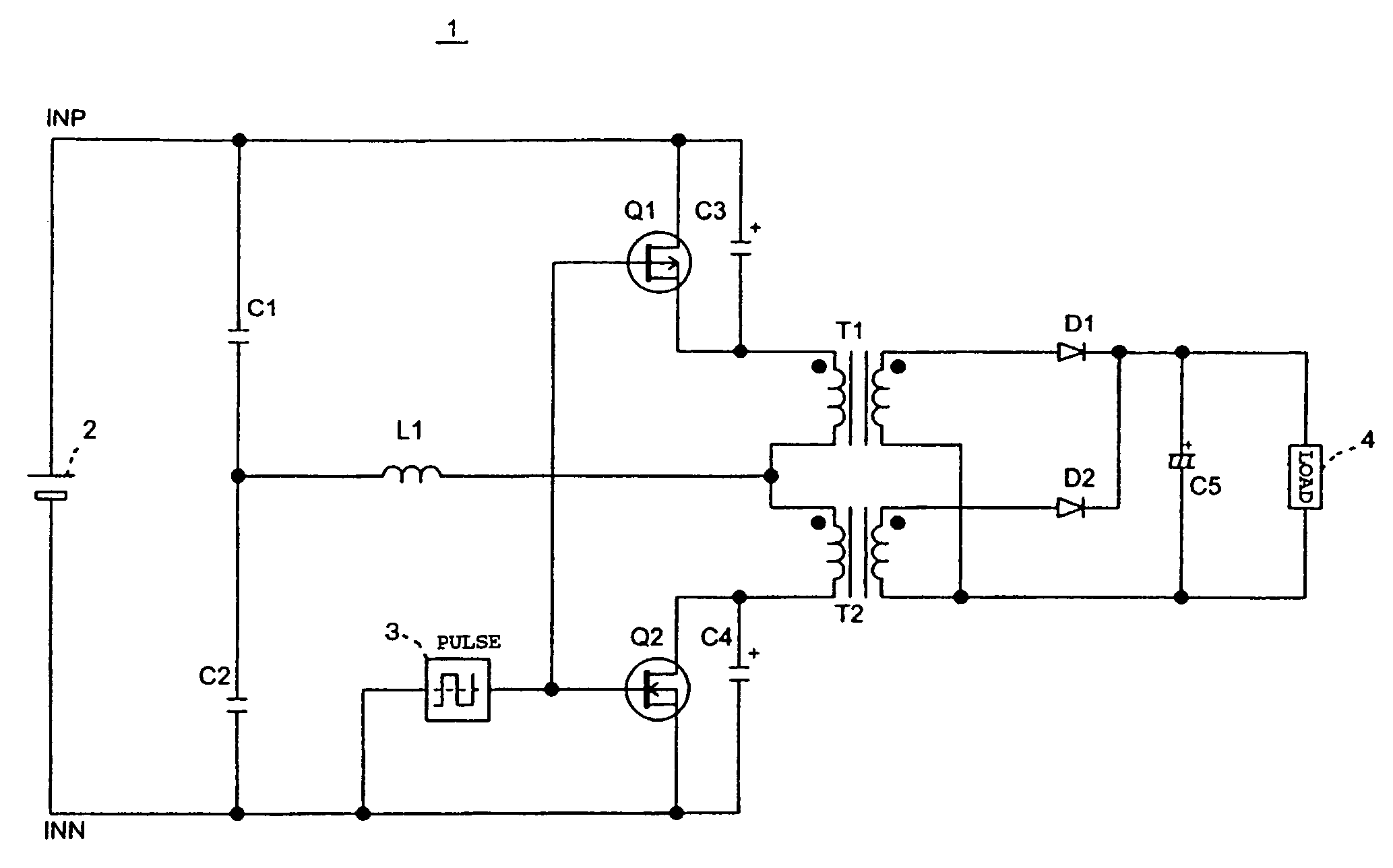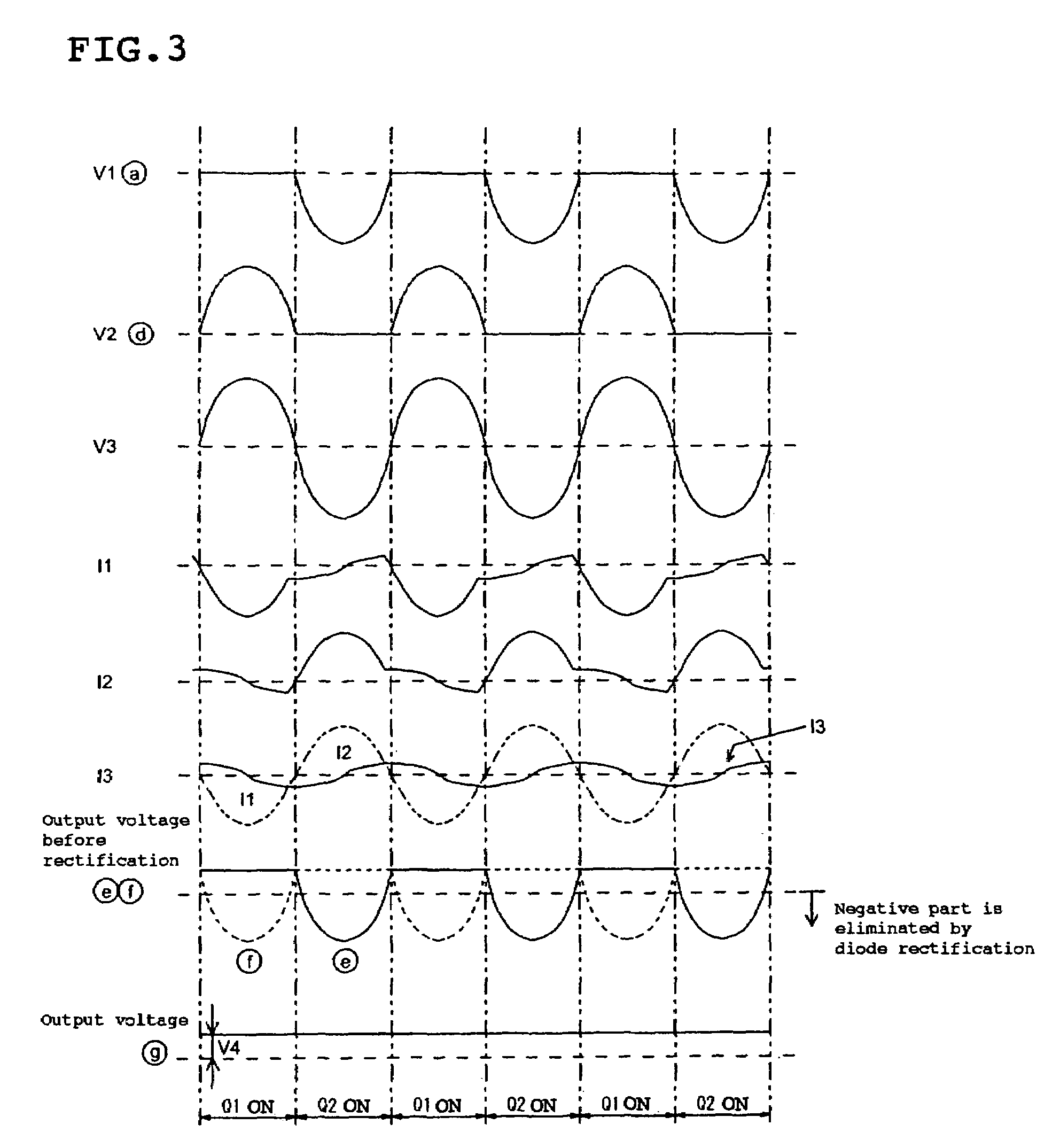Push-pull switching power converter
a technology of switching power converter and push-pull, which is applied in the direction of electric variable regulation, process and machine control, instruments, etc., can solve the problems of reducing power conversion efficiency, complex structure, and switching noise, and achieves simple and compact converter, high conversion efficiency, and reduced high-frequency switching noise
- Summary
- Abstract
- Description
- Claims
- Application Information
AI Technical Summary
Benefits of technology
Problems solved by technology
Method used
Image
Examples
first embodiment
A. First Embodiment
[0015]A push-pull switching power converter according to a first embodiment of the present invention will be described below. According to the first embodiment, the push-pull switching power converter inputs a direct electric current and outputs a direct electric current; that is, the push-pull switching power converter is a DC-to-DC converter which converts a DC voltage to another DC voltage.
[0016]FIG. 1 is an overall circuit diagram of the push-pull switching power converter according to the first embodiment. As shown in FIG. 1, a power converter (DC-to-DC converter) 1 according to the first embodiment includes a DC input source 2, a pulse generator 3, a load 4, switching devices Q1 and Q2, capacitors C1 to C5, transformers T1 and T2, and diodes D1 and D2.
[0017]The DC input source 2 may be a dry battery or a storage battery. Additionally, the DC input source 2 may be a component for converting a commercial power source to a DC power source. In the latter case, t...
second embodiment
B. Second Embodiment
[0043]A push-pull switching power converter according to a second embodiment of the present invention will be briefly described next with reference to FIG. 4 while focusing on the differences from the first embodiment.
[0044]A first difference is that, in the second embodiment, coils L2 and L3 respectively connected to the primary windings of transformers T1 and T2 in series are used for current resonance while the coil L1 provided in the path common to the first and second electric currents is used for current resonance in the first embodiment.
[0045]A second difference is that, in the second embodiment, a switching device Q1 at the high potential side is composed of an NMOS transistor, as with a switching device Q2 at low potential side. This allows switching devices Q1 and Q2 having the same characteristic to be easily obtained.
[0046]A third difference is that, in the second embodiment, since an NMOS transistor is used as the switching device Q1, an output of th...
PUM
 Login to View More
Login to View More Abstract
Description
Claims
Application Information
 Login to View More
Login to View More - R&D
- Intellectual Property
- Life Sciences
- Materials
- Tech Scout
- Unparalleled Data Quality
- Higher Quality Content
- 60% Fewer Hallucinations
Browse by: Latest US Patents, China's latest patents, Technical Efficacy Thesaurus, Application Domain, Technology Topic, Popular Technical Reports.
© 2025 PatSnap. All rights reserved.Legal|Privacy policy|Modern Slavery Act Transparency Statement|Sitemap|About US| Contact US: help@patsnap.com



